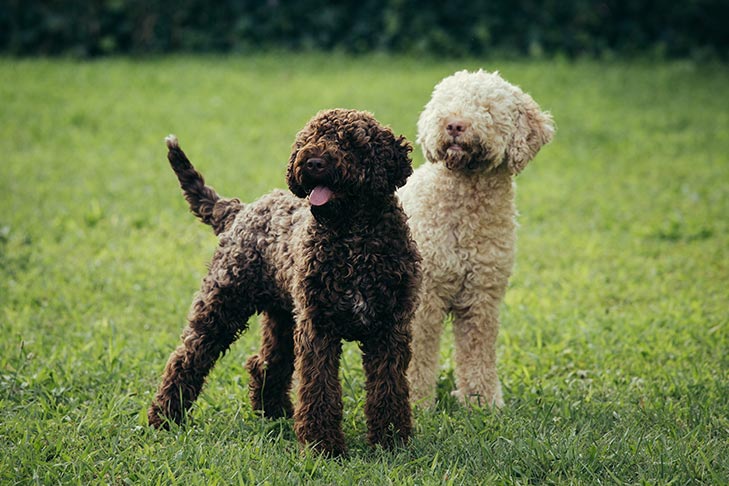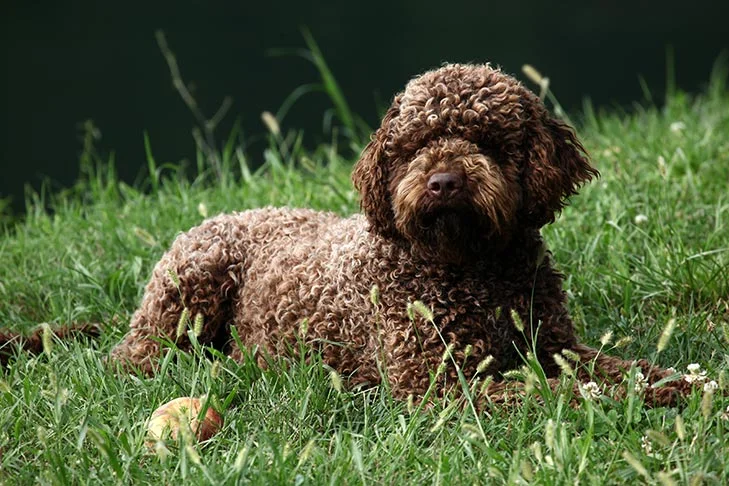Italy’s charming ‘truffle dog,’ the Lagotto Romagnolo, with a curly coat and elaborate face decorations. Despite their luxurious appearance, Lagotti is a hardworking laborer with keen nose who hunt for truffles, a delicate and precious delicacy.
The Italians call it ‘carino,’ and the English call it ‘cute.’ In either language, this breed is completely adorable. The Lagotto Romagnolo (plural: Lagotti Romagnoli) is distinguished by wooly curls that cover the entire body and are crowned by a luxurious beard, brows, and whiskers. Lagotti is under 20 inches tall and weighs less than 35 pounds. But don’t be misled by their cuddly appearance; these are tough workers with tremendous strength and endurance. The breed’s signature curls are more like human hair than fur.






 Health
Health Grooming
Grooming Exercise
Exercise Training
Training Nutrition
Nutrition